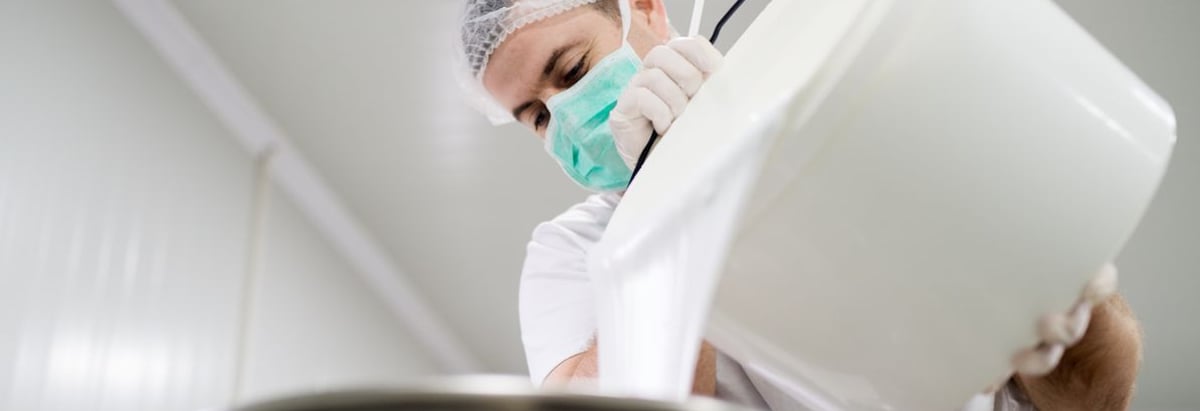Kawaguchi Chemical Industry (TSE:4361) Has A Somewhat Strained Balance Sheet

David Iben put it well when he said, 'Volatility is not a risk we care about. What we care about is avoiding the permanent loss of capital.' So it seems the smart money knows that debt - which is usually involved in bankruptcies - is a very important factor, when you assess how risky a company is. Importantly, Kawaguchi Chemical Industry Co., Ltd (TSE:4361) does carry debt. But the more important question is: how much risk is that debt creating?
When Is Debt A Problem?
Debt assists a business until the business has trouble paying it off, either with new capital or with free cash flow. If things get really bad, the lenders can take control of the business. However, a more common (but still painful) scenario is that it has to raise new equity capital at a low price, thus permanently diluting shareholders. Having said that, the most common situation is where a company manages its debt reasonably well - and to its own advantage. The first step when considering a company's debt levels is to consider its cash and debt together.
Check out our latest analysis for Kawaguchi Chemical Industry
How Much Debt Does Kawaguchi Chemical Industry Carry?
As you can see below, Kawaguchi Chemical Industry had JP¥3.09b of debt, at May 2024, which is about the same as the year before. You can click the chart for greater detail. However, because it has a cash reserve of JP¥946.0m, its net debt is less, at about JP¥2.15b.

How Healthy Is Kawaguchi Chemical Industry's Balance Sheet?
Zooming in on the latest balance sheet data, we can see that Kawaguchi Chemical Industry had liabilities of JP¥4.09b due within 12 months and liabilities of JP¥1.20b due beyond that. Offsetting these obligations, it had cash of JP¥946.0m as well as receivables valued at JP¥2.70b due within 12 months. So it has liabilities totalling JP¥1.65b more than its cash and near-term receivables, combined.
This is a mountain of leverage relative to its market capitalization of JP¥1.72b. Should its lenders demand that it shore up the balance sheet, shareholders would likely face severe dilution.
We measure a company's debt load relative to its earnings power by looking at its net debt divided by its earnings before interest, tax, depreciation, and amortization (EBITDA) and by calculating how easily its earnings before interest and tax (EBIT) cover its interest expense (interest cover). The advantage of this approach is that we take into account both the absolute quantum of debt (with net debt to EBITDA) and the actual interest expenses associated with that debt (with its interest cover ratio).
Kawaguchi Chemical Industry's net debt is 2.7 times its EBITDA, which is a significant but still reasonable amount of leverage. However, its interest coverage of 28.6 is very high, suggesting that the interest expense on the debt is currently quite low. Importantly, Kawaguchi Chemical Industry grew its EBIT by 80% over the last twelve months, and that growth will make it easier to handle its debt. When analysing debt levels, the balance sheet is the obvious place to start. But it is Kawaguchi Chemical Industry's earnings that will influence how the balance sheet holds up in the future. So if you're keen to discover more about its earnings, it might be worth checking out this graph of its long term earnings trend.
Finally, a business needs free cash flow to pay off debt; accounting profits just don't cut it. So the logical step is to look at the proportion of that EBIT that is matched by actual free cash flow. Over the last three years, Kawaguchi Chemical Industry reported free cash flow worth 2.4% of its EBIT, which is really quite low. For us, cash conversion that low sparks a little paranoia about is ability to extinguish debt.
Our View
While Kawaguchi Chemical Industry's conversion of EBIT to free cash flow has us nervous. To wit both its interest cover and EBIT growth rate were encouraging signs. Looking at all the angles mentioned above, it does seem to us that Kawaguchi Chemical Industry is a somewhat risky investment as a result of its debt. Not all risk is bad, as it can boost share price returns if it pays off, but this debt risk is worth keeping in mind. When analysing debt levels, the balance sheet is the obvious place to start. But ultimately, every company can contain risks that exist outside of the balance sheet. These risks can be hard to spot. Every company has them, and we've spotted 3 warning signs for Kawaguchi Chemical Industry (of which 1 is concerning!) you should know about.
If you're interested in investing in businesses that can grow profits without the burden of debt, then check out this free list of growing businesses that have net cash on the balance sheet.
Valuation is complex, but we're here to simplify it.
Discover if Kawaguchi Chemical Industry might be undervalued or overvalued with our detailed analysis, featuring fair value estimates, potential risks, dividends, insider trades, and its financial condition.
Access Free AnalysisHave feedback on this article? Concerned about the content? Get in touch with us directly. Alternatively, email editorial-team (at) simplywallst.com.
This article by Simply Wall St is general in nature. We provide commentary based on historical data and analyst forecasts only using an unbiased methodology and our articles are not intended to be financial advice. It does not constitute a recommendation to buy or sell any stock, and does not take account of your objectives, or your financial situation. We aim to bring you long-term focused analysis driven by fundamental data. Note that our analysis may not factor in the latest price-sensitive company announcements or qualitative material. Simply Wall St has no position in any stocks mentioned.
About TSE:4361
Kawaguchi Chemical Industry
Manufactures and sells fine chemicals in Japan.
Solid track record with adequate balance sheet and pays a dividend.


